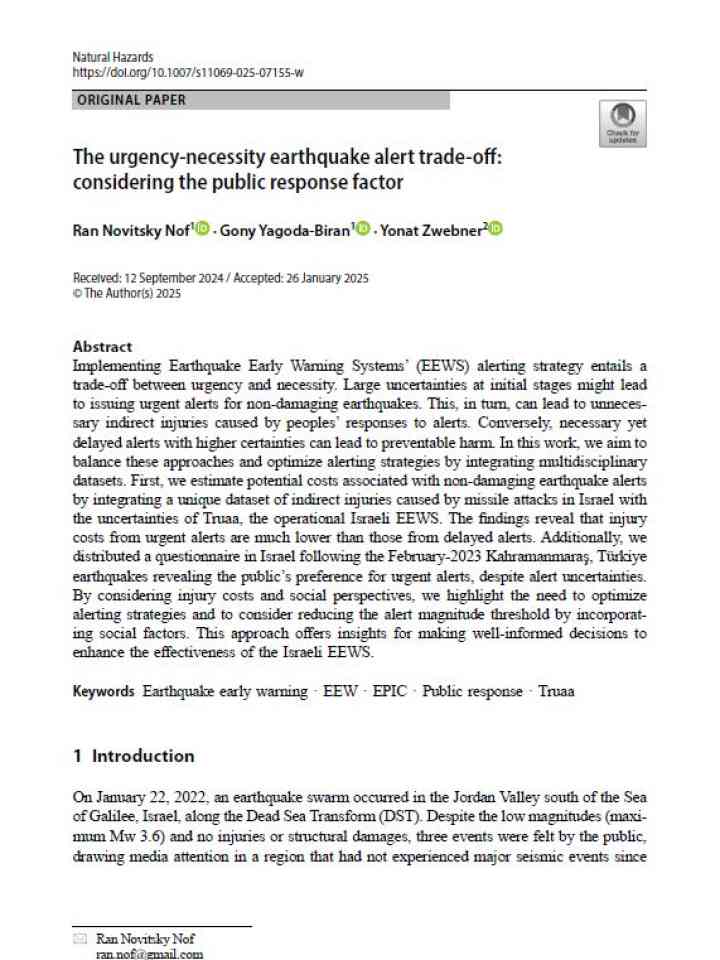The urgency-necessity earthquake alert trade-off: considering the public response factor
In this study, authors estimate potential costs associated with non-damaging earthquake alerts by integrating a unique dataset of indirect injuries caused by missile attacks in Israel with the uncertainties of Truaa, the operational Israeli earthquake early warnings systems (EEWS). Implementing Earthquake Early Warning Systems’ (EEWS) alerting strategy entails a trade-off between urgency and necessity. Large uncertainties at initial stages might lead to issuing urgent alerts for non-damaging earthquakes. This, in turn, can lead to unnecessary indirect injuries caused by peoples’ responses to alerts. Conversely, necessary yet delayed alerts with higher certainties can lead to preventable harm. In this work, the researchers aim to balance these approaches and optimize alerting strategies by integrating multidisciplinary datasets.
The findings reveal that injury costs from urgent alerts are much lower than those from delayed alerts. Additionally, we distributed a questionnaire in Israel following the February-2023 Kahramanmaraş, Türkiye earthquakes revealing the public’s preference for urgent alerts, despite alert uncertainties. By considering injury costs and social perspectives, we highlight the need to optimize alerting strategies and to consider reducing the alert magnitude threshold by incorporating social factors. This approach offers insights for making well-informed decisions to enhance the effectiveness of the Israeli EEWS.
Explore further
